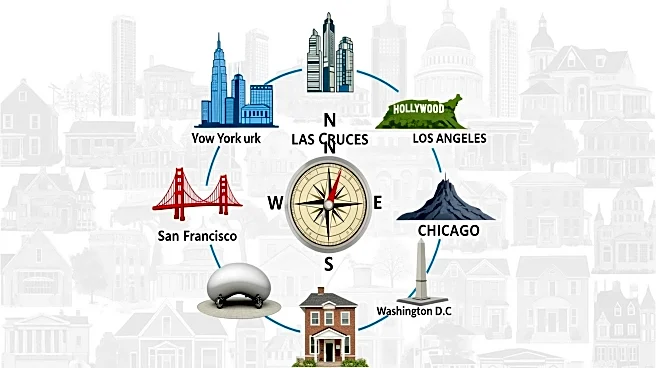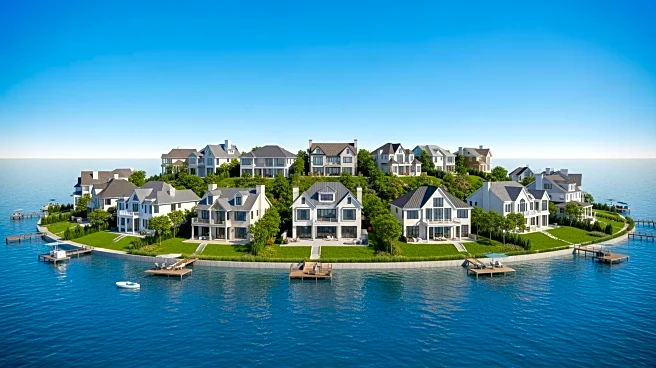What's Happening?
The real estate market in Daphne, Alabama, is attracting interest from homebuyers across various major U.S. metropolitan areas. According to data compiled by Stacker using cross-market demand statistics
from Realtor.com, several cities have shown significant view shares for properties in Daphne. The scarcity of homes on the market nationwide, which remains below pre-pandemic levels, is contributing to elevated home prices despite a slowdown in sales over the past year. Online house hunting has become a crucial tool for prospective buyers, with a 2021 National Association of Realtors report indicating that 97% of homebuyers utilized online platforms for their searches. The data reveals that Chicago, IL, leads the interest with a view share of 14.3%, followed by Atlanta, GA, and Dallas, TX, with 6.3% and 6.1% respectively. Other cities showing interest include Birmingham, AL, New Orleans, LA, and New York, NY.
Why It's Important?
The interest from major metropolitan areas in Daphne's real estate market highlights a broader trend of migration and investment in smaller cities. This shift could have significant implications for local economies, potentially driving up property values and stimulating economic growth in the region. As more people from larger cities consider relocating to areas like Daphne, local infrastructure, services, and community dynamics may experience changes. This trend also reflects the ongoing impact of the pandemic on housing preferences, with many individuals seeking more space and affordability outside of densely populated urban centers. Real estate professionals and local policymakers may need to adapt to these changes by addressing housing supply issues and ensuring sustainable development to accommodate new residents.
What's Next?
As interest in Daphne continues to grow, real estate agents and developers may focus on increasing the availability of homes to meet demand. Local government and community leaders might explore strategies to support infrastructure development and enhance amenities to attract and retain new residents. Additionally, the trend could prompt further analysis of migration patterns and housing market dynamics, influencing future urban planning and economic policies. Stakeholders in the real estate industry will likely monitor these developments closely to capitalize on emerging opportunities and address potential challenges associated with increased demand.
Beyond the Headlines
The migration interest in Daphne from larger metros may also reflect broader cultural and lifestyle shifts. As remote work becomes more prevalent, individuals are increasingly able to prioritize quality of life factors such as community, environment, and cost of living over proximity to traditional employment hubs. This could lead to long-term changes in how cities and towns across the U.S. develop and market themselves to potential residents. Furthermore, the trend may influence how urban and suburban areas balance growth with sustainability, impacting local ecosystems and community identities.











